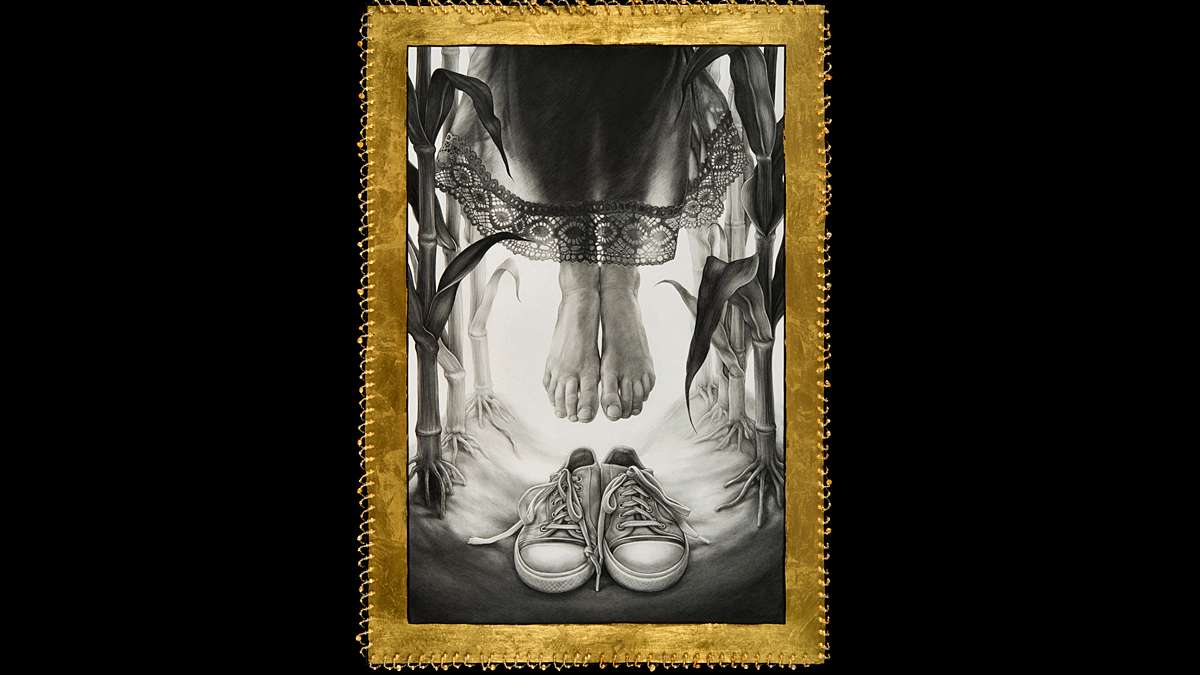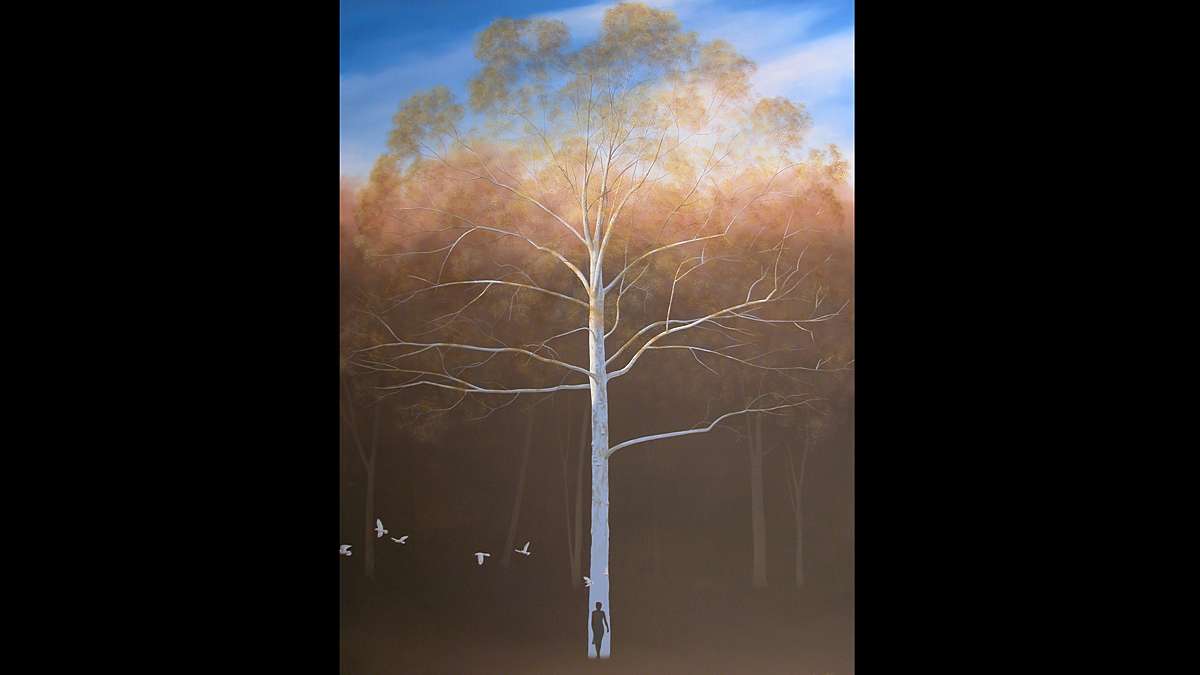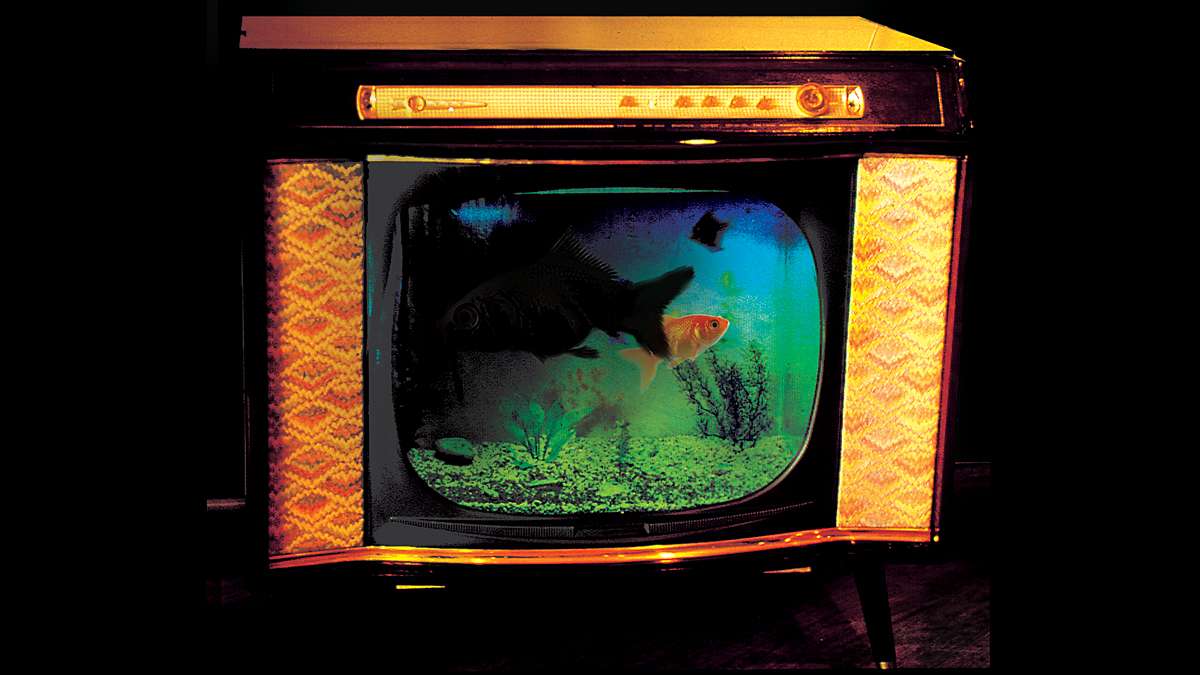Trenton exhibit shows just how surreal modern life has become
It’s been almost 100 years since French poet and writer Andre Breton founded Surrealism. Now, surrealism pervades the media. Once a way to resolve the contradiction between dream and reality, it’s now something we don’t even blink at when we snap on the TV. We use the expression “it was a surreal experience” to describe anything out of the ordinary.
“Early and mid 20th century works by de Chirico, Magritte, Ernst and Dali forever loosened the look and logic of thought and vision,” says Princeton-based artist Frances Heinrich, who has curated The False Mirror – Surrealism Forward And Back, on view at Artworks Trenton from January 11 through February 22.”They forever twisted and morphed all that we now view and accept as possible.”
Works in drawing, painting, sculpture, video and installation by Tom Bendtsen, John Goodyear, Benjamin S. Jones, Alan Kesselhaut, Paul Leibow, Lynn and Jim Lemyre, Adam Niklewicz, Sarah Petruziello, Frank Rivera, Anita Thacher, and Andrew Wilkinson demonstrate “the ideas, sensibilities, and visual freedoms originally granted by historical Surrealists and Dadaists,” says Heinrich, who will will present a talk during the January 11 opening relating historical works of Surrealism to special effects in film, TV, advertising and fashion.
“I notice in everything that surrounds us media wise, there are extraordinary influences from the historic Surrealist period of the 1920s and ’30s,” said the curator, citing commercials that have used Surrealist ideas to attract attention: a taco biting back or a flying car. “Today people accept them and don’t think of them in the way when first shown in art world.”
Magritte felt that people didn’t see objects, they took appearances for granted, and he wanted to put them together in a way to see them anew: a glass of water balanced on top of umbrella makes you look at those objects differently. “This idea was also embraced by Christo,” said Heinrich. “He wrapped things because we’re acclimated to not seeing things, not seeing our surroundings, until they are wrapped and become more prominent and important. We stop and take them in with more intention. We are so used to seeing things we don’t really see, we just assume.”
To give historical context to the forward/back idea, contemporary works are grouped near prints by Surrealist masters. For example, Magritte’s “Empire Of Light” (1950), a dark, nocturnal street scene set against an incongruous pastel-blue, light-drenched sky spotted with fluffy cumulus clouds, hangs near works that deal with time and light.
Frank Rivera’s Escher-like painting is organized in a series of small panels with images that include gesturing hands, mechanical birds, puppets, chairs and appliances performing in ways that are contrary to the laws of nature. “The human eye is fascinated… by making connections between polar opposites,” Rivera writes. Ernst’s “The Hat Makes the Man” – a collage of hats cut from catalogs — is juxtaposed with Rivera’s “Reliable Plumage,” which shows different views of a man’s headdress.
John Goodyear describes himself as a conceptualist. “The artist looks for an idea for a work rather than looking for technical expertise or finish,” he said. “Chance operation in the work moves away from beauty. Mistakes in the work were viewed as idea out of context and often led to important discoveries.”
His “Chicken and Egg” is a chicken made of eggshells and an egg made of chicken feathers – Heinrich has paired it with Magritte’s “The Mathematical Mind,” in which a mother has the head of a baby and the baby had the head of a mother.
Heinrich’s own “Worldly Fates” installation evokes Dickens’ Miss Havisham, a bride waiting forever. It incorporates juxtaposed incongruous imagery. A lit globe with human features and an antique hand-held table mirror serve as heads for an elaborately dressed bridal figure. Another bride, spread on the floor, has a deflated balloon for a head and is held captive by a ball and chain. “The work explores self-awareness, approval-seeking, conforming, accommodation, rejection, abandonment, futility, failure and deflation,” said Heinrich, who went to Douglass College during the Fluxus movement. Heinrich’s eyes were opened by faculty Roy Lichtenstein, George Segal, Robert Watts and Geoffrey Hendricks.
Her installation was subconsciously influenced by sketches Dali made for furniture that was never produced in his lifetime, though later produced by BD Barcelona Design in the 1990s. The Leda chair has feet in high-heeled shoes at the bottom of its legs. “They only existed as sketches, and he died without seeing them produced,” she said. “The idea of combining incongruous images and putting them together in a way we don’t expect, making leaps of imagination, is all Surreal. Ernst cut up catalogues and put together objects that didn’t go together. He called Magritte’s work painted collage.”
Heinrich finds Surrealism in movies like “Avatar” and “Blade Runner,” and her goal is to heighten awareness of the roots in art history. “Life-size chickens playing badminton and other startling combinations capture attention – it’s a good hook for selling.”
The False Mirror – Surrealism Forward And Back, on view at Artworks Trenton January 11 through February 22. Curator Frances Heinrich will present a short Powerpoint talk during the January 11 opening that relates famous historical works to the current “special effects” in film, TV, advertising and fashion. Artworks Gallery, 19 Everett Alley, Trenton, artworkstrenton.org, 609-394-9436.
________________________________________________________
The Artful Blogger is written by Ilene Dube and offers a look inside the art world of the greater Princeton area. Ilene Dube is an award-winning arts writer and editor, as well as an artist, curator and activist for the arts.
WHYY is your source for fact-based, in-depth journalism and information. As a nonprofit organization, we rely on financial support from readers like you. Please give today.








